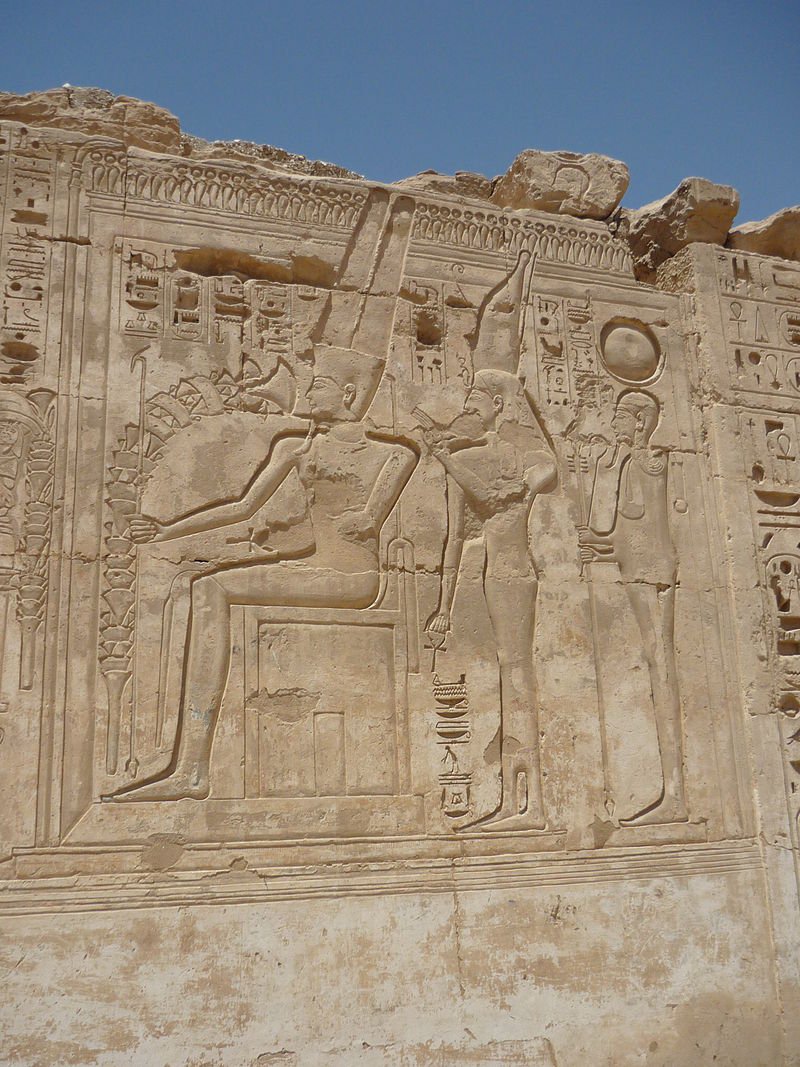Karnak: One Of Largest Temple Complexes In The World And Its Spectacular View
A. Sutherland - AncientPages.com - Karnak is one of the largest temple complexes in the world. This magnificent place has a rich architectural, ritual, religious, economic, social, and political history.
The Karnak Temple complex is located in southern Egypt in and around the modern city of Luxor, which has a wealth of ancient Egyptian ruins.
Karnak. Image credit: Simon - Pixabay
The outstanding construction and historical place of ancient Egypt stands at Karnak.
"On the east bank of the river, about a mile to the north of modern Luxor, there lies a group of temples known at the present day as Karnak. The name was given to the village which grew up over the ruins of the ancient city and temple.
"The debris of succeeding generations of villages buried the whole temple, leaving only the highest portion of the nave of the hypostyle hall above the ground, the clerestory alone remaining visible; hence the name given to the village, “the Town of the Windows”, writes Margaret Alice Murray in her book "Egyptian Temples"
"Now that the site has been extensively excavated it will be seen that there are at least twenty temples in the group; the greater number being dedicated to Amon, but there are also temples to Mut, Khonsu, Ptah, Sekhmet, and others, besides chapels to minor deities which occur in several places within the walls of the main buildings. .." 1
This colossal temple complex covers hundreds of acres in the area of modern-day Luxor. Once Karnak was surrounded by the thriving city of Thebes.
The Theban king Kamose erected a memorial in the temple of Karnak to record his victories in battle. The most spectacular renovation was at Karnak, where the temple to the god Amun was lavishly updated.
The Theban Triad at Medinet Habu. From left to right: Amun, Mut and Khonsu. Image credit: Rémih - CC BY-SA 3.0
Also, Thutmose III's most famous victory is recorded on an inscription at the Temple at Karnak.
It describes a surprise attack on Megiddo, Israel, where his army of 10,000 soldiers captured the city.
The temple of Karnak was known as Ipet-isu-or "most select of places"-by the ancient Egyptians. It is a city of temples built over 2,000 years and dedicated to the Theban triad of Amun-Ra, Mut, and Khonsu. This derelict place can still overshadow many wonders of the modern world and, in its day, must have been awe-inspiring.
For the largely uneducated ancient Egyptian population, this could only have been the place of the gods. According to some sources, this was the most significant religious building ever made. It covered about 200 acres (1.5 km by 0.8 km) and was a place of pilgrimage for nearly 2,000 years. The area of the sacred enclosure of Amun alone is sixty-one acres and could hold ten average European cathedrals.
The sacred barges of the Theban Triad once floated on the lake during the annual Opet festival. Storerooms, living quarters for the priests, and an aviary for aquatic birds surrounded the lake.
The Egyptians believed that towards the end of the annual agricultural cycle, the gods and the earth became exhausted and required a fresh input of energy from the chaotic energy of the cosmos.
Hypostyle hall of the Precinct of Amun-Re, as it appeared in 1838 in The Holy Land, Syria, Idumea, Arabia, Egypt, and Nubia. Image credit: David Roberts RA, artist and Haghe, Louis, 1806-1885, lithographer - Public Domain
The Opet festival was held yearly at Karnak and Luxor to accomplish this magical regeneration. It lasted for twenty-seven days and was also a celebration of the link between the pharaoh and the god Amun. The procession began at Karnak and ended at Luxor Temple, one and a half miles (2.4 kilometers) to the south.
The statue of the god Amun was bathed with holy water, dressed in fine linen, and adorned in gold and silver jewelry. The priests then placed the god in a shrine and onto the ceremonial barque supported by poles for carrying.
Pharaoh emerged from the temple, his priests carrying the barque on their shoulders, and together they moved into the crowded streets. A troop of Nubian soldiers serving as guards beats their drums, and musicians accompanied the priests in song as incense filled the air.
Written by – A. Sutherland - AncientPages.com Senior Staff Writer
Updated on January 7, 2024
Copyright © AncientPages.com All rights reserved. This material may not be published, broadcast, rewritten or redistributed in whole or part without the express written permission of AncientPages.com
Expand for referencesReferences:
- Margaret Alice Murray, Egyptian Temples"
Kelly, Miles. 1000 Facts Ancient Egypt
More From Ancient Pages
-
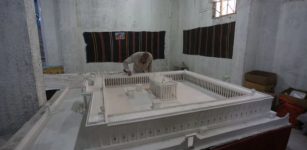 Memory Of Palmyra’s Ancient Ruins Preserved Thanks To One Man’s Dedication And Mini Models Of Lost Temples
Archaeology | Mar 24, 2021
Memory Of Palmyra’s Ancient Ruins Preserved Thanks To One Man’s Dedication And Mini Models Of Lost Temples
Archaeology | Mar 24, 2021 -
 Longvek – Ancient Historical City That Sheds Light On Cambodia’s ‘Dark Age’
Archaeology | Jan 13, 2016
Longvek – Ancient Historical City That Sheds Light On Cambodia’s ‘Dark Age’
Archaeology | Jan 13, 2016 -
 Secrets Of The Japanese Shirasaya Sword Mounting
Featured Stories | Sep 11, 2018
Secrets Of The Japanese Shirasaya Sword Mounting
Featured Stories | Sep 11, 2018 -
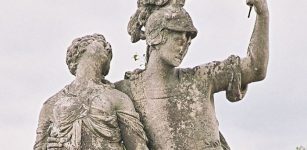 Tyrannical Tarquin The Proud: The Seventh And Last King Of Rome Was Banished
Featured Stories | Jan 28, 2020
Tyrannical Tarquin The Proud: The Seventh And Last King Of Rome Was Banished
Featured Stories | Jan 28, 2020 -
 They Spoke The Language Of The Gods – Keepers Of Sacred Ancient Knowledge – Part 1
Civilizations | May 22, 2018
They Spoke The Language Of The Gods – Keepers Of Sacred Ancient Knowledge – Part 1
Civilizations | May 22, 2018 -
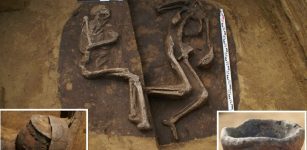 Unusual Grave Of The Trzciniec Culture Is An Archaeological Puzzle
Archaeology | Dec 23, 2019
Unusual Grave Of The Trzciniec Culture Is An Archaeological Puzzle
Archaeology | Dec 23, 2019 -
 Surprising Connection Between Norse God Odin And Attila The Hun Revealed
Featured Stories | Dec 8, 2020
Surprising Connection Between Norse God Odin And Attila The Hun Revealed
Featured Stories | Dec 8, 2020 -
 First Genetic Map Of People Of Ireland Is Presented By Irish, British And American Researchers
Archaeology | Dec 15, 2017
First Genetic Map Of People Of Ireland Is Presented By Irish, British And American Researchers
Archaeology | Dec 15, 2017 -
 Cajamarca, Peru: Three Archaeological Sites – Identified
Archaeology | Aug 24, 2015
Cajamarca, Peru: Three Archaeological Sites – Identified
Archaeology | Aug 24, 2015 -
 Native Americans’ Visions Of Distant Explorers May Unravel Some Ancient Mysteries Of North America – The Arrival – Part 1
Featured Stories | Nov 19, 2019
Native Americans’ Visions Of Distant Explorers May Unravel Some Ancient Mysteries Of North America – The Arrival – Part 1
Featured Stories | Nov 19, 2019 -
 Legend: Strange Encounter With The Fairies In The Land Of The Light
Myths & Legends | Oct 14, 2024
Legend: Strange Encounter With The Fairies In The Land Of The Light
Myths & Legends | Oct 14, 2024 -
 What Is The Curse Of The Ninth Symphony?
Ancient History Facts | Aug 3, 2018
What Is The Curse Of The Ninth Symphony?
Ancient History Facts | Aug 3, 2018 -
 Tiresias – Unusual Prophet Who Turned Into A Woman For Seven Years
Featured Stories | May 16, 2020
Tiresias – Unusual Prophet Who Turned Into A Woman For Seven Years
Featured Stories | May 16, 2020 -
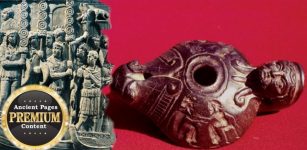 Mysterious Ancient Oil Lamps In Ohio And Wisconsin – Evidence Of Pre-Columbian Contact?
Artifacts | Dec 20, 2017
Mysterious Ancient Oil Lamps In Ohio And Wisconsin – Evidence Of Pre-Columbian Contact?
Artifacts | Dec 20, 2017 -
 5 Myths About The Amazons – Ancient Female Warriors
Featured Stories | Jan 13, 2016
5 Myths About The Amazons – Ancient Female Warriors
Featured Stories | Jan 13, 2016 -
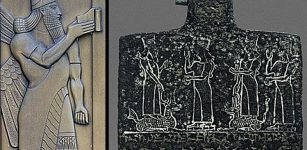 Mesopotamian God Nabu Inscribed The Human Fates Determined By The Gods
Featured Stories | Aug 7, 2018
Mesopotamian God Nabu Inscribed The Human Fates Determined By The Gods
Featured Stories | Aug 7, 2018 -
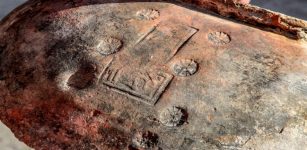 2,500-year-old Saka settlement found in Lake Issyk-Kul: could this be where St Matthew is buried?
Civilizations | Sep 4, 2015
2,500-year-old Saka settlement found in Lake Issyk-Kul: could this be where St Matthew is buried?
Civilizations | Sep 4, 2015 -
 Mystery Of Count St. Germain – He Claimed To Have Lived For Several Centuries
Featured Stories | Sep 4, 2014
Mystery Of Count St. Germain – He Claimed To Have Lived For Several Centuries
Featured Stories | Sep 4, 2014 -
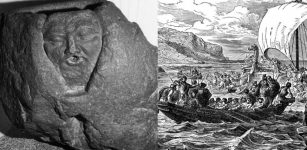 Ancient Mysteries Of Chicago: Is The Puzzling Waubansee Stone A Neglected Pre-Columbian Artifact?
Artifacts | Mar 4, 2017
Ancient Mysteries Of Chicago: Is The Puzzling Waubansee Stone A Neglected Pre-Columbian Artifact?
Artifacts | Mar 4, 2017 -
 The Fierce Great Heathen Army And The Invasion Of East Anglia
Vikings | Aug 8, 2022
The Fierce Great Heathen Army And The Invasion Of East Anglia
Vikings | Aug 8, 2022


